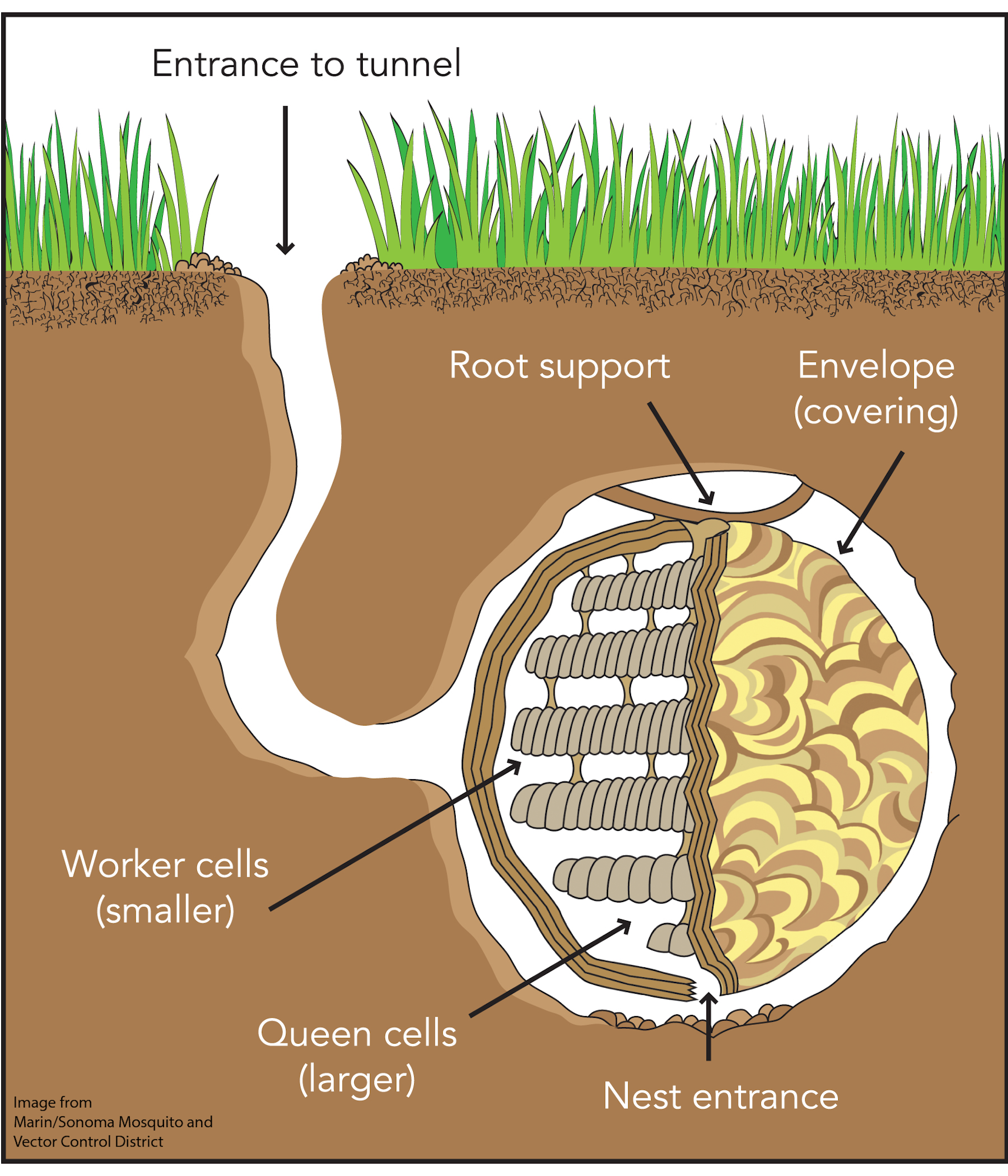Yellowjacket Nest Treatment
The District provides no-cost control for ground nesting yellowjackets when the location of the nest is known. A yellowjacket nest site looks like a small hole in the ground with many yellowjackets flying in and out. Without disturbing the nest, mark its location with a flag or other object so that the technician who comes to treat it will be able to find it.
Nests on the eaves of buildings and in trees are typically of aerially nesting yellowjackets and wasps. These types of wasps are considered beneficial insects. They eat spiders and garden pests, and do not generally cause harm to humans. These nests should only be removed if they are in a location that will be disturbed by people or pets.
The District is not licensed to conduct pest control inside of structures. For nests inside of structures, look for a pest control expert with a structural pest control license.
A yellowjacket nest looks like a hole with yellowjackets flying in and out. To locate the nest, look for an area with many yellowjackets. Then look for a steady stream flying in the same direction. They will be entering a hole in the ground or other opening. In dense vegetation you may not be able to see the nest entrance. Instead, look for the line of yellowjackets entering and exiting the nest. Without disturbing the nest, mark it with a flag or other object. This will help your technician locate the nest.
Once you have located and carefully marked the nest, submit a service request HERE.


